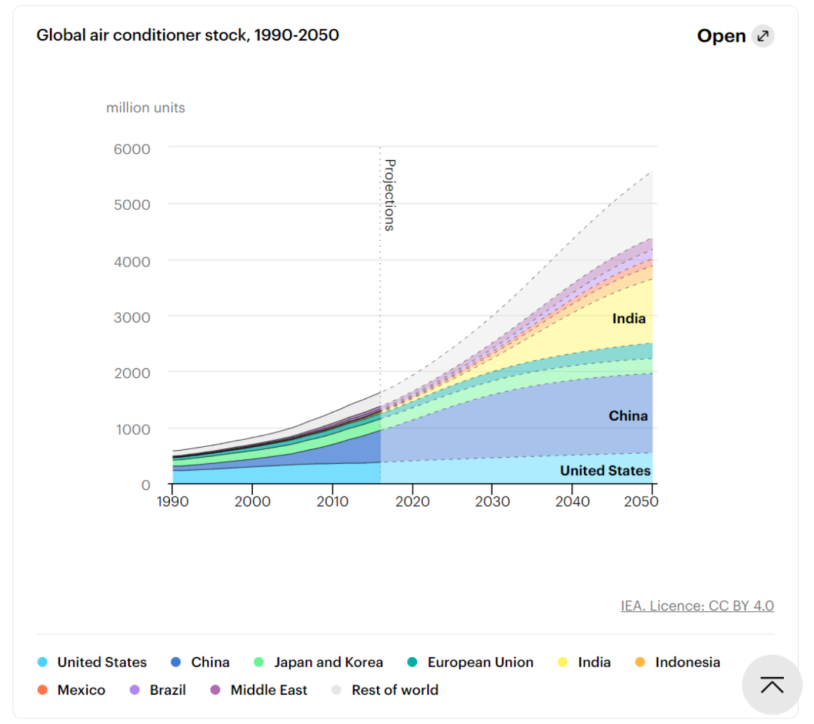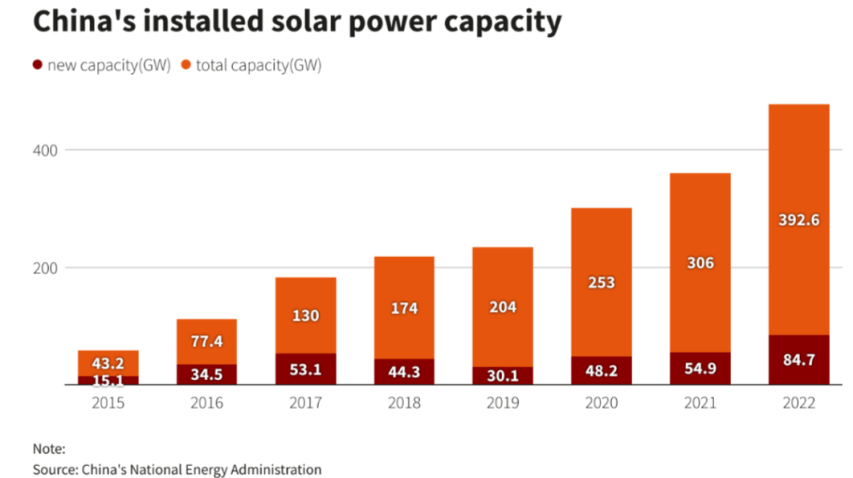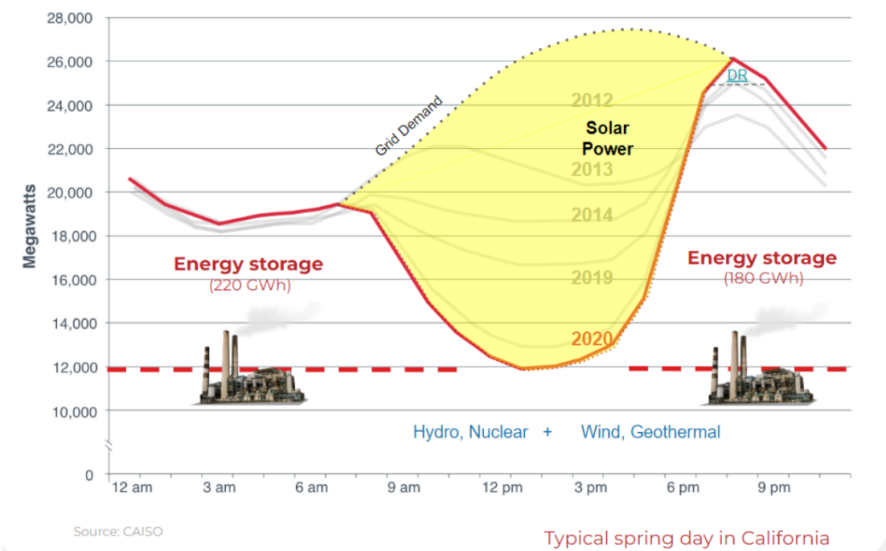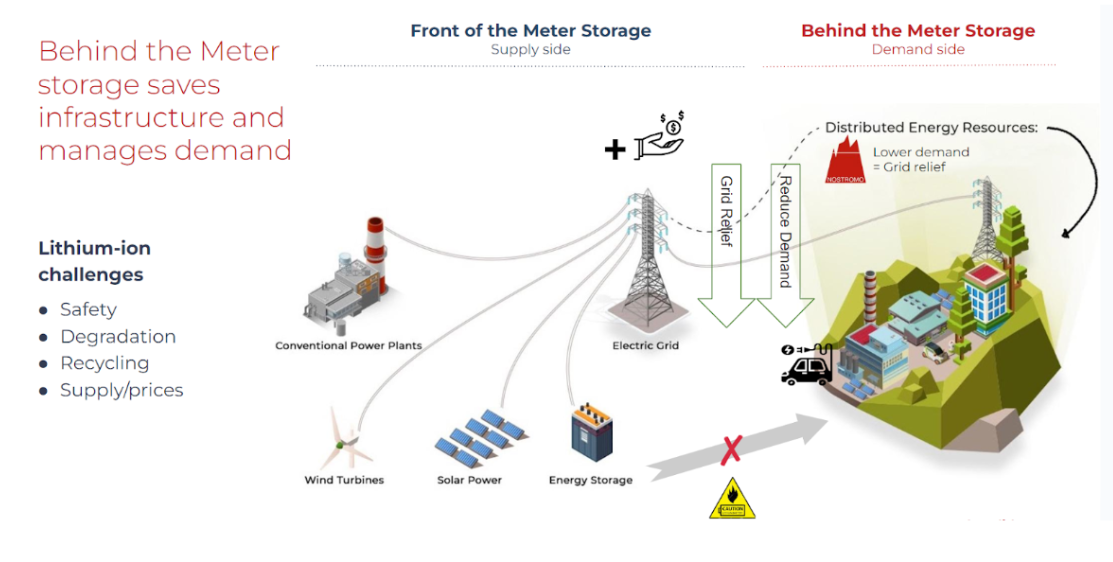Blog
Clean energy storage: The key to mitigating global warming
As the world heats up, more energy is required to keep buildings cool. By pairing renewable energy with safe ‘behind the meter’ energy storage solutions businesses can reduce both their carbon footprint and their energy bills.

Myriam Bin-Nun
11 Jul 2023
Global warming’s cooling problem
Last Monday (July 3, 2023) the world saw its hottest day on record. As the planet continues to warm, consumers are responding by:
Switching on their air conditioners more frequently.
Switching on their air conditioners for longer periods of time.
Installing air conditioners or cooling systems for the first time ever.
A study published in Earth’s Future indicates that the US demand for air conditioning could increase upwards of 13% by 2030. On a global scale, the increased demand is expected to be even more dramatic. Worldwide air conditioning usage is projected to more than triple by 2050.
Problematically, in 2023, buildings already account for 74% of all energy usage; and cooling these buildings is the fastest-growing energy demand. As the planet continues to warm, the resources needed to keep these buildings cool will continue to increase.

Why can’t we just ramp up the grid to meet the growing demand?
Simply increasing reliance on fossil-fuelled power stations to meet this increased demand is unsustainable. Firstly, it perpetuates and accelerates climate change. Secondly, it would require massive overhauls of existing infrastructure to prevent system overload.
What about renewable energy production?
The solution to increased worldwide demand for energy is twofold. Firstly, we need rapid and widespread adoption of renewable energy. Secondly, we need to find innovative ways to store and discharge this renewable energy as needed.
Fortunately, we’re already making great progress on the former. Solar farms in the US are experiencing approximately 20% YoY growth, with similar growth trajectories in China and elsewhere.

Solar energy challenges:
Increased solar energy production is encouraging, but it’s not without challenges of its own:
Energy generated by solar farms dissipates unless used immediately
Solar farms are often located at considerable distances from the cities they power. This requires building new infrastructure to connect the energy to the grid.
Solar farms can only generate energy when the sun is shining.
The problem of the “duck curve”
Let’s zero in on that last point a little further. People use more energy when they are awake than when they sleep. However, there is a gap between when the sun sets and when people go to bed. Between 4-9 pm, the demand for energy soars at the very time when renewable solar power becomes unavailable. 50% of this demand is from air conditioners alone. Maintaining these cooling systems places considerable stress on the grid. It also impacts consumer finances, as energy companies typically charge higher rates for this peak time consumption.
Moreover, as the planet warms, consumer demand for peak-time cooling will rapidly increase. The system will be placed under further strain, and there will likely be a higher cost per kW to achieve the same standard of cooling we have today. Without substantial infrastructure improvements, grids will be in danger of exceeding capacity. This will lead to increased risks of brownouts and blackouts.

The solution: energy storage to capture excess renewables.
One of the best solutions to address the “duck curve” is clean energy storage. This involves storing excess renewable energy when consumer demand is low, and drawing on this stored energy when demand is high. In the example above, energy storage solutions may begin dispensing energy when demand peaks around sunset.
What types of energy storage are available?
There are two primary forms of energy storage:
1. “In front of the meter”: This type of storage is on the ‘supply’ side and stores energy on the utility site, where the electricity is generated. This type of storage increases renewable power to the grid, but doesn’t increase the grid’s overall capacity (after all there is a structural limit to how much energy a particular grid can dispense at any one time - no matter the source).
2. “Behind the meter”: This type of storage is on the ‘demand’ side. This means it stores energy on the consumer’s end. “Behind the meter” storage systems are typically set up on the consumer’s site (such as a home, office building, or hospital), and the stored energy then supplies the energy needs of just that site. This energy is often sourced from renewable energy in non-peak times when power is plentiful and cheap. It can then be dispersed on-site to the end user for minimal cost. It also reduces or eliminates reliance on the grid during peak hours. This can help put less demand on the system overall and decrease the likelihood of systemic brownouts and blackouts.
How is the energy actually stored?
Lithium-ion batteries
A common example of an “in front of the meter” storage solution is lithium-ion batteries on solar farms. They store excess energy when the sun is shining. In the evenings, or on cloudy days, this stored energy can then be dispersed back into the power grid for general usage. Using lithium-ion batteries is appealing because it enables the utilization of renewable energy around the clock while reducing reliance on fossil fuels. However, solar farms are often located far from the cities they serve and require new infrastructure to transmit energy from the source to the destination.
There are other significant problems with the large-scale use of lithium-ion batteries. Their production is heavily reliant on finite natural resources (such as nickel, cobalt, and of course lithium itself). These are costly to buy and environmentally difficult to extract - for example, producing just one ton of lithium requires over 2.2 million liters of water. Similarly, nickel mines produce severe air pollution problems and cobalt is predominantly found in the Congo where both unsafe environmental and labor conditions are rife.
Moreover, the safe disposal of used lithium batteries is proving to be a further environmental headache. Improper disposal can result in hazardous materials seeping into soil and waterways. Without significant improvements in production and end-of-life management, lithium-ion batteries should not be viewed as an optimal or stand-alone approach to large-scale energy storage.

On-Site Thermal Energy Storage
“Behind-the-meter” thermal energy solutions can provide a more environmentally friendly alternative to lithium battery storage and drastically reduce the price of energy for end-users. They can also diminish a building's vulnerabilities to grid overloads during peak hours, which is particularly important for cooling large-scale buildings like hotels, shopping centers, and hospitals.
Different forms of thermal energy have different mechanisms and goals. Let’s take Nostromo’s IceBrick system as an example. The system's goal is to sustainably cool buildings during peak hours. It achieves this by freezing IceBricks during non-peak hours, such as in the middle of the day when renewable solar energy is available at a low cost. It then releases this stored energy when the grid switches to expensive (and often non-renewable) energy. This makes the IceBrick both environmentally friendly and extremely cost-effective for users.
Better still, the IceBrick uses water - an accessible and clean resource - rather than rare or dangerous minerals. The system lasts for upwards of 25 years and its components are safe and fully recyclable, so it does not pose the same ‘end-of-life’ challenges as lithium-ion batteries.
You can see the IceBrick system in action here:
Global warming will increase the demand for cooling. You need to be proactive to:
Decrease your vulnerability
Minimize your expenses
Reduce your carbon footprint
All this is available to you with Nostromo’s IceBrick technology. To see how it can work for your building contact us today for an obligation-free walk-through.



